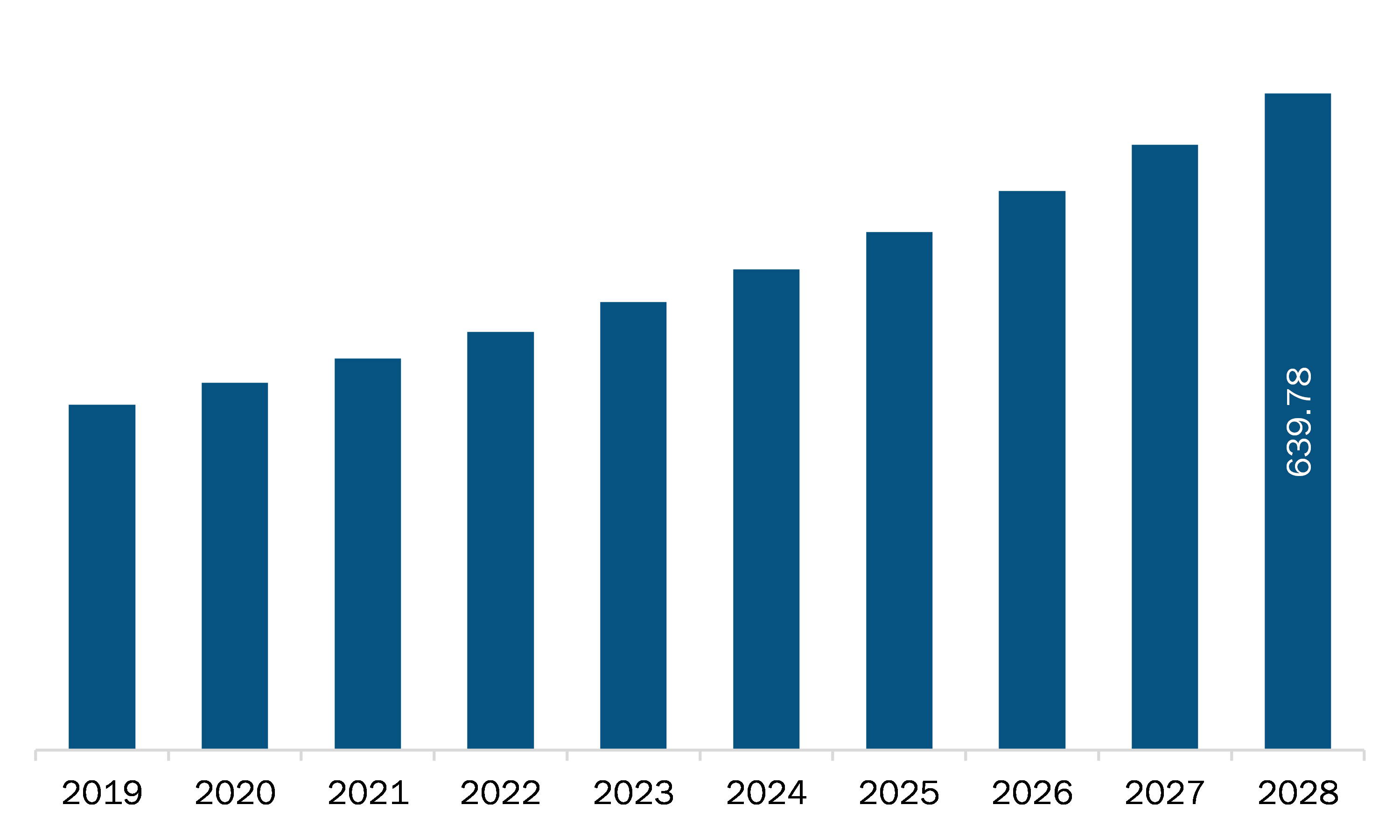The MEA radiopharmaceuticals market is expected to grow from US$ 381.20 million in 2021 to US$ 639.78 million by 2028; it is estimated to grow at a CAGR of 7.7% from 2021 to 2028.
The UAE, Saudi Arabia, and South Africa are major economies in MEA. Burgeoning usage of nuclear medicines for personalized treatment is expected to fuel the market growth. In personalized care, treatment is individualized based on specific biochemical markers detected in patients as well as on the characteristics of their disease condition. Imaging techniques identify patients for particular therapies and optimize patient response to treatment while minimizing side effects. Precision medicine involves the use of an individual’s genomic information to offer them targeted treatment. In recent years, scientists are focusing on pioneering neurogenetics to introduce better therapies and treatment for brain and related disorders. Nuclear medicine is gaining pace gradually, and targeted radionuclide therapy provides efficacious treatment modalities against cancer. The latest innovations involve using radionuclides, new or improved multimodality imaging devices, and several recently marketed radiopharmaceuticals in all medical applications, particularly cardiology, neurology, and oncology. Current developments in self-shielded cyclotrons, video-monitored hot cell designs, improved targets, and automated PET radiopharmaceutical synthesis modules, based on computer-controlled graphic user interphase (GUI), have revolutionized the PET molecular imaging technology for basic biomedical research to accomplish evidence-based personalized medicine. Further advancements in novel PET radiopharmaceutical utilizing automated microfluidic synthesis modules and multifunctional nanoparticles, are likely to improve biomarker discovery, internal dosimetry, immunotherapy, pharmacokinetics, and stem cell tracking in regenerative medicine. The peptide receptor radionuclide therapy (PRRT) is at the forefront of new personalized medicines. The somatostatin analogs used in this technique, which bind selectively to cellular receptors on the neuroendocrine tumor cells, carry a gallium radionuclide that simultaneously emits radiation that kills tumors and makes the analogs visible as well as quantifiable with PET. The end effect of successful and measurable treatment is decreased tumor size and reduced symptoms, along with a halt in tumor progression in many patients. Thus, the use of nuclear medicines in personalized medicine is emerging as a prime future trend in the MEA radiopharmaceuticals market.
In case of COVID-19, MEA is highly affected especially South Africa. Countries in the Middle East have also widely affected the socio-economic condition by the COVID–19 pandemic. However, the countries have wisely reacted to the COVID–19 pandemic to avoid the spread of infection. Like other regions, lockdown and social distancing were imposed, impairing these trends hindering access to work, regular income, payments, fairs, schools, and healthcare. Therefore, it is expected that the countries have undergone huge losses and are still trying to recover them. The lockdown has widely affected the non-emergency medical services in the region, affecting the medical devices. Countries like Saudi Arabia and UAE are emerging as healthcare destinations in the regions. However, they are dependent on the countries for the resources. The availability of vaccines and other healthcare facilities in the developing countries in the region is expected to provide scope for the market few years. The COVID-19 pandemic has helped the above-mentioned countries enhance their capacity and showcase their abilities for healthcare services. In Saudi Arabia the number of visits for common neurological complaints decreased by 24 percent. In comparison to pre-pandemic, throughout the pandemic period. The most notable example is brain CT scans, which increased by 11.3 percent during the epidemic period. One of the main causes for the decrease in emergency department visits is the fear of catching COVID-19 infection just by visiting hospitals. These factors are likely to have negative impact on the market growth.
With the new features and technologies, vendors can attract new customers and expand their footprints in emerging markets. This factor is likely to drive the MEA radiopharmaceuticals market. The MEA radiopharmaceuticals market is expected to grow at a good CAGR during the forecast period.

- This FREE sample will include data analysis, ranging from market trends to estimates and forecasts.
MEA Radiopharmaceuticals Market Segmentation
MEA Radiopharmaceuticals Market – By Type
- Diagnostic Nuclear Medicine
- SPECT
- PET
- Therapeutic Nuclear Medicine
- Alpha Emitters
- Beta Emitters
- Brachytherapy Isotopes
MEA Radiopharmaceuticals Market – By Application
- Oncology
- Cardiology
- Neurology
- Others
MEA Radiopharmaceuticals Market – By End User
- Hospitals
- Imaging Centers
- Academic and Research Centers
- Others
MEA Radiopharmaceuticals Market, by Country
- Saudi Arabia
- South Africa
- UAE
- Rest of MEA
MEA Radiopharmaceuticals Market -Companies Mentioned
- Advanced Accelerator Applications
- Bayer AG
- Bracco Imaging S.p.A
- Cardinal Health Inc
- Curium
- ECZACIBAŞI MONROL NUCLEAR PRODUCTS CO.
- GENERAL ELECTRIC
- Nordion
- NTP RADIOISOTOPES
Middle East and Africa Radiopharmaceuticals Report Scope
| Report Attribute | Details |
|---|---|
| Market size in 2021 | US$ 381.20 Million |
| Market Size by 2028 | US$ 639.78 Million |
| CAGR (2021 - 2028) | 7.7% |
| Historical Data | 2019-2020 |
| Forecast period | 2022-2028 |
| Segments Covered |
By Type
|
| Regions and Countries Covered |
Middle East and Africa
|
| Market leaders and key company profiles |
|
- Historical Analysis (2 Years), Base Year, Forecast (7 Years) with CAGR
- PEST and SWOT Analysis
- Market Size Value / Volume - Regional, Country
- Industry and Competitive Landscape
- Excel Dataset
Recent Reports
Testimonials
Reason to Buy
- Informed Decision-Making
- Understanding Market Dynamics
- Competitive Analysis
- Identifying Emerging Markets
- Customer Insights
- Market Forecasts
- Risk Mitigation
- Boosting Operational Efficiency
- Strategic Planning
- Investment Justification
- Tracking Industry Innovations
- Aligning with Regulatory Trends





















 Get Free Sample For
Get Free Sample For